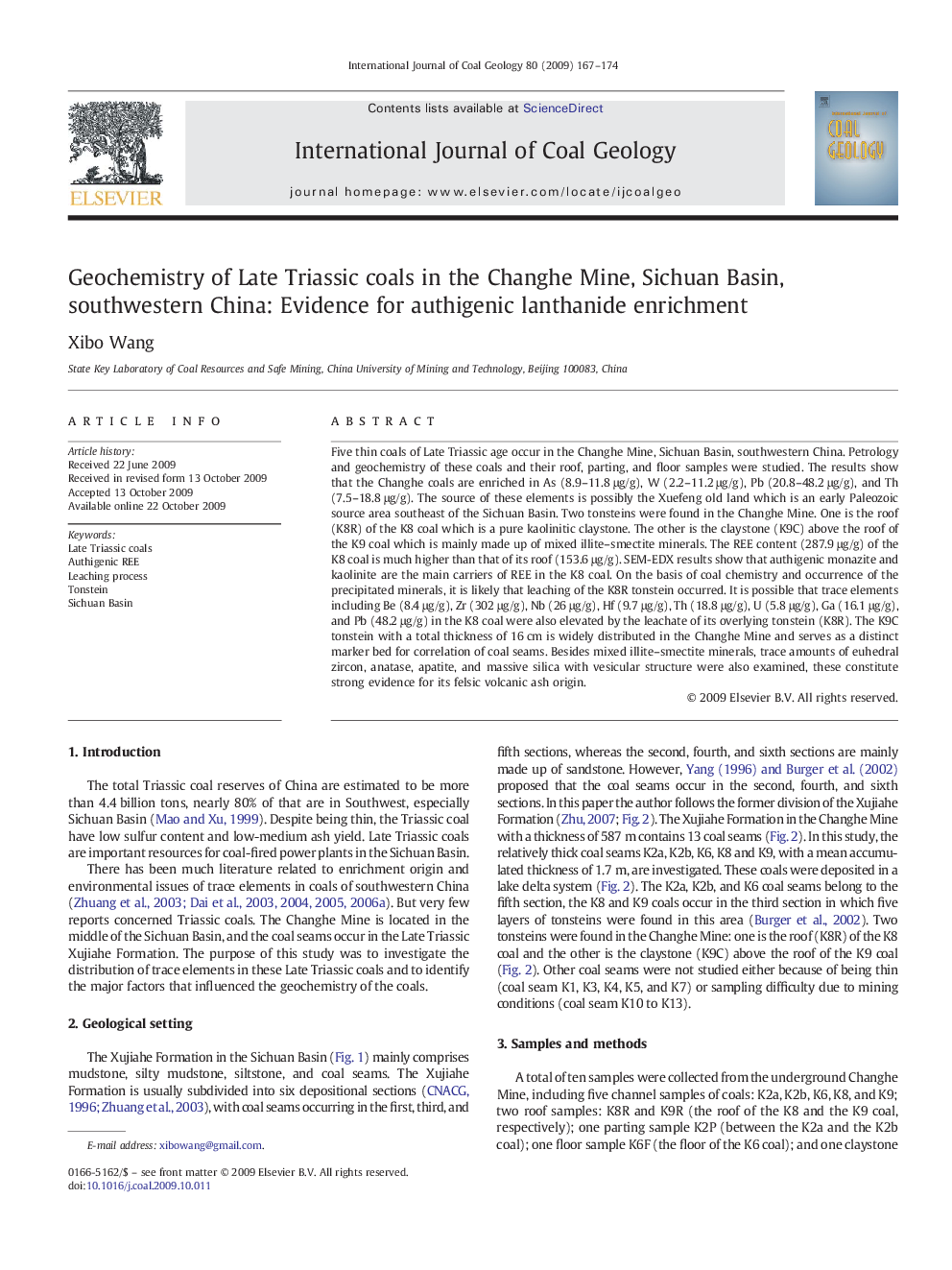| کد مقاله | کد نشریه | سال انتشار | مقاله انگلیسی | نسخه تمام متن |
|---|---|---|---|---|
| 1753819 | 1522628 | 2009 | 8 صفحه PDF | دانلود رایگان |

Five thin coals of Late Triassic age occur in the Changhe Mine, Sichuan Basin, southwestern China. Petrology and geochemistry of these coals and their roof, parting, and floor samples were studied. The results show that the Changhe coals are enriched in As (8.9–11.8 μg/g), W (2.2–11.2 μg/g), Pb (20.8–48.2 μg/g), and Th (7.5–18.8 μg/g). The source of these elements is possibly the Xuefeng old land which is an early Paleozoic source area southeast of the Sichuan Basin. Two tonsteins were found in the Changhe Mine. One is the roof (K8R) of the K8 coal which is a pure kaolinitic claystone. The other is the claystone (K9C) above the roof of the K9 coal which is mainly made up of mixed illite–smectite minerals. The REE content (287.9 μg/g) of the K8 coal is much higher than that of its roof (153.6 μg/g). SEM-EDX results show that authigenic monazite and kaolinite are the main carriers of REE in the K8 coal. On the basis of coal chemistry and occurrence of the precipitated minerals, it is likely that leaching of the K8R tonstein occurred. It is possible that trace elements including Be (8.4 μg/g), Zr (302 μg/g), Nb (26 μg/g), Hf (9.7 μg/g), Th (18.8 μg/g), U (5.8 μg/g), Ga (16.1 μg/g), and Pb (48.2 μg/g) in the K8 coal were also elevated by the leachate of its overlying tonstein (K8R). The K9C tonstein with a total thickness of 16 cm is widely distributed in the Changhe Mine and serves as a distinct marker bed for correlation of coal seams. Besides mixed illite–smectite minerals, trace amounts of euhedral zircon, anatase, apatite, and massive silica with vesicular structure were also examined, these constitute strong evidence for its felsic volcanic ash origin.
Journal: International Journal of Coal Geology - Volume 80, Issues 3–4, 1 December 2009, Pages 167–174